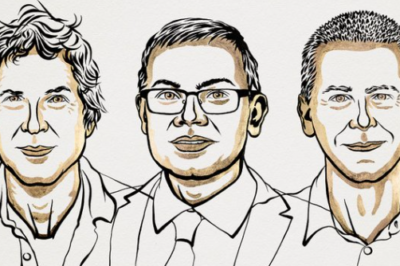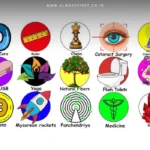
- David Baker awarded for his groundbreaking work in “computational protein design,” creating new types of proteins for pharmaceuticals, vaccines, and nanomaterials.
- Demis Hassabis and John M. Jumper honored for their AI-based “protein structure prediction,” solving a 50-year-old problem and revolutionizing biology with AlphaFold2.
- The Nobel Prize in Chemistry highlights how advanced technology is reshaping scientific understanding and applications.
How did these discoveries revolutionize science?
This year’s Nobel Prize in Chemistry has been awarded to three remarkable scientists who have pushed the boundaries of protein science. David Baker, a 62-year-old scientist, received the prestigious award for his pioneering work in “computational protein design,” which allows scientists to build entirely new kinds of proteins. These artificial proteins can be used in the development of medicines, vaccines, and advanced nanomaterials, expanding the possibilities for future innovations.
On the other hand, Demis Hassabis and John M. Jumper, leaders in AI at Google DeepMind, were recognized for their incredible achievement in solving a problem that has puzzled scientists for decades—predicting protein structures. They developed AlphaFold2, an artificial intelligence tool that predicts the three-dimensional structure of almost every known protein. This discovery is transforming biology by helping researchers better understand diseases and phenomena such as antibiotic resistance and enzyme functions, even those that can break down plastics.
Why is AlphaFold2 considered groundbreaking?
Protein structures are incredibly complex, and for many years, predicting their three-dimensional form based on amino acid sequences was a nearly impossible task. Demis Hassabis and John M. Jumper’s AI model AlphaFold2 changed that. Introduced in 2020, AlphaFold2 can predict the structure of virtually all known proteins, offering valuable insights into their functions. The model is now used by millions of researchers across 190 countries, revolutionizing fields such as drug discovery, disease research, and environmental science.
Before AlphaFold2, predicting a single protein’s structure could take years, but this tool has made it possible to analyze the structure of over 200 million proteins. Scientists can now study enzymes that break down pollutants or visualize how pathogens develop resistance to antibiotics, making this AI model one of the most significant tools in modern biology.
What does this mean for the future of science?
The achievements of David Baker, Demis Hassabis, and John M. Jumper represent a major leap forward in our understanding of proteins, which are crucial to all biological processes. Baker’s work on creating new proteins opens the door to innovative materials and medical treatments, while Hassabis and Jumper’s AI tool speeds up the understanding of existing proteins, creating opportunities for tackling global challenges such as disease outbreaks and pollution.
The recognition of their work by the Nobel Prize committee demonstrates the growing importance of combining artificial intelligence with traditional scientific research. This combination is not only advancing our knowledge of biology but also paving the way for faster, more efficient discoveries that can help solve some of the world’s most pressing problems.
Conclusion: A milestone in science and technology
The 2024 Nobel Prize in Chemistry celebrates groundbreaking innovations that blend AI with biology, showcasing the power of computational tools in solving complex scientific puzzles. With new proteins being designed and known protein structures now easily predicted, these discoveries will undoubtedly shape the future of medicine, environmental science, and technology. As we look forward, this Nobel Prize serves as a reminder of how cutting-edge technology can drive scientific progress to new heights.








































Leave a Reply